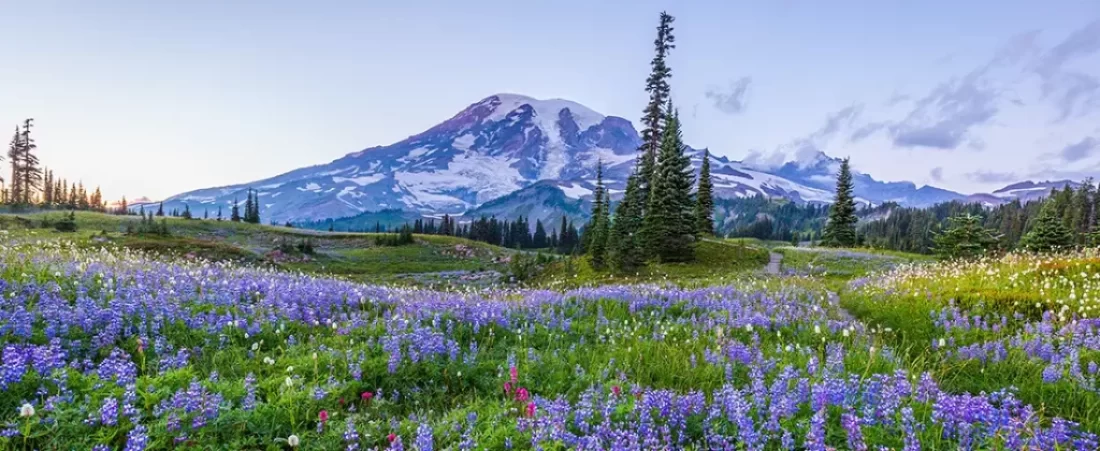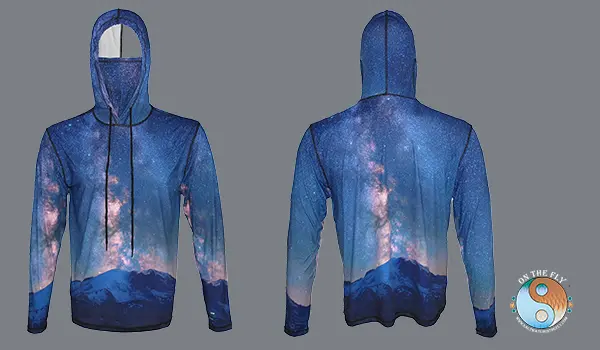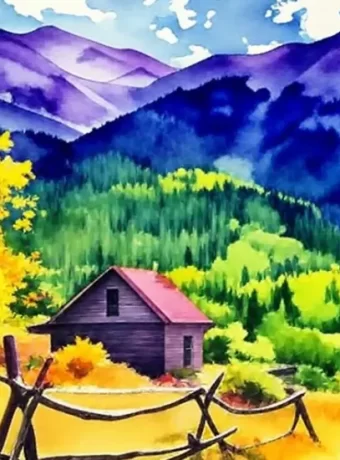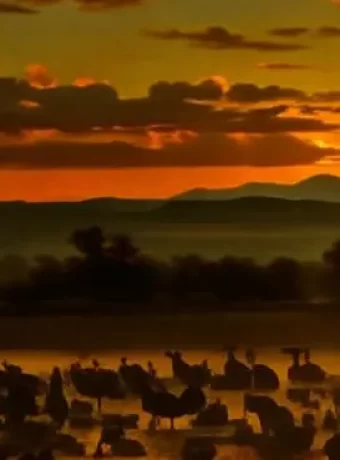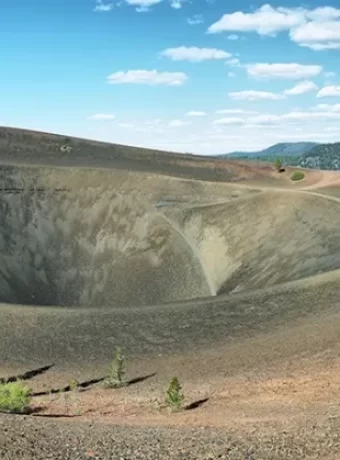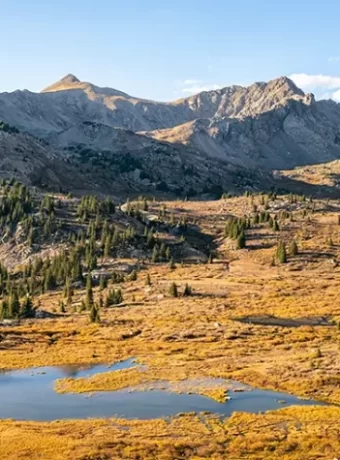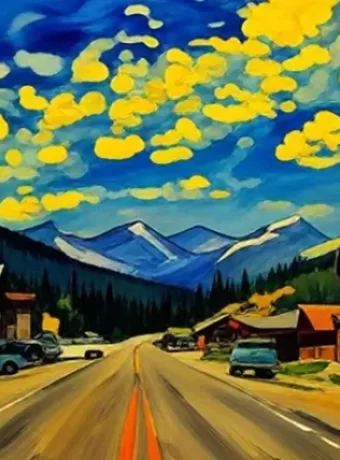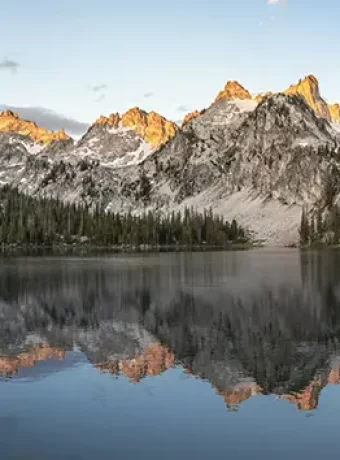Discover the Majestic Beauty of Mount Rainier National Park
Many people might feel intimidated planning a trip to a place as renowned as Mount Rainier National Park. It can feel like a place reserved for elite mountaineers or extreme adventurers, but that’s simply not the case.
Established in 1899, Mount Rainier National Park is a treasure of the Pacific Northwest, offering accessible adventures for all. This 369-square-mile wonderland, southeast of Seattle, WA, centers around the iconic, glaciated peak, 14,411-foot Mount Rainier.
Table of Contents
Planning Your Visit to Mount Rainier National Park
Timing is a big part of a successful trip. Some roads and facilities close during the snowy months, so planning ahead is important. The park is busiest during summer.
You may need a timed entry reservation. During Summer, you’ll need a reservation to go through the Nisqually, Stevens Canyon, and Sunrise/White River entrance at peak hours. Be sure to check the weather before you leave home, too.
Fees and Passes at the Park
Understanding costs before arriving is smart. A single-day pass is $30 per vehicle, but an annual pass for Mount Rainier National is just $55. See all fee options on the NPS site.
You might also want to consider a special interagency pass. Active-duty military members and their dependents get free access with the America the Beautiful National Parks and Federal Recreational Lands Pass. There are also other passes such as a senior pass.
Staying Informed During your Visit
The mountain’s weather is constantly shifting. Real-time updates are key for an enjoyable park visit. You can use live webcams for up-to-date views of the mountain and current conditions.
The park’s weather page gives you things like current snow depth at Paradise and forecasts. You should also be aware of road conditions or road status before your trip. Being prepared is easy, with tools like this.
Yes, Stay Informed, instead of being a dead hiker. Have Fun.
Dressed in Quality Outdoor Apparel can Make the Difference
Between excellent trip and a real bummer of one. Design by Outdoor Enthusiasts makes the difference. Graphic Hoodies for those on the Go!
Exploring the Wonders: Activities in Mount Rainier National Park
Mount Rainier National offers activities for everyone. Whether you want relaxing strolls, challenging hikes, or wildlife watching, there’s plenty to do.
Hiking Trails Galore at Mount Rainier National Park
The park boasts over 260 miles of trails. You will find options for a range of skills. This makes it a hiker’s haven.
Gentle trails like the Nisqually River Trail, a 1.2-mile path perfect for families, introduce you to the park’s beauty. There are tougher hikes as well like the 93-mile Wonderland Trail around the mountain. You can even make day trips out of some of the hiking trails.
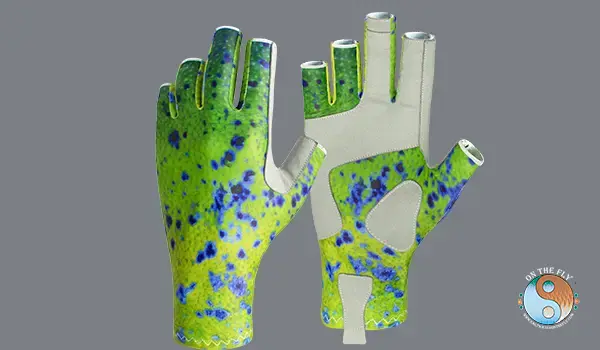
Hiking Glove in Artistic Graphic Designs
Hiking Gloves in artistic graphic designs, in the energy of nature. UPF-50 sun protection, perfect for hiking, driving, fishing or just most outdoor activities.
Hiking Silver Falls Loop Trail
Want an easy Mount Rainier hike with a big payoff? Check out the Silver Falls Loop Trail. This 3-mile loop is perfect for families and new hikers. But don’t think “easy” means boring. This trail packs a punch with gorgeous views.
You’ll start near the Ohanapecosh Campground. The trail quickly enters old-growth forest. It’s cool and shady, a nice escape on a hot day. Massive trees tower overhead. Look for the delicate wildflowers sprinkled along the path.
The main attraction, of course, is Silver Falls. This stunning waterfall tumbles down a rocky cliff. You’ll cross a bridge right above the falls. It’s the perfect spot for a photo op. The mist feels refreshing, especially after a good hike. Take a moment to enjoy the roar of the water.
This area is part of the park’s historic area. Keep an eye out for old structures like the Ohanapecosh Ranger Station. This adds another layer of interest to your hike. Although it’s an easy hike, it’s a good idea to wear comfortable shoes. Some sections of the trail can be a bit rocky. Bring water and snacks, too. This will make your hike more enjoyable.
Because this is a popular trail, it can get busy, especially on weekends. Try hiking early in the morning or on a weekday for a more peaceful experience. This is just one of the many great hikes Mount Rainier National Park offers. So, get out there and explore!
Hiking Tolmie Peak Trail
Want a hike with amazing views but not a killer climb? Tolmie Peak Trail is your answer. This trail is about 6.5 miles roundtrip. It’s in Mount Rainier National Park. The elevation gain is only about 1,100 feet. That makes it a great choice for hikers of most skill levels. This hike gives you gorgeous views of Mount Rainier. But there’s more to see than the mountain. You’ll also walk through forests and meadows.
One of the coolest things about this hike is the fire lookout. It sits on the edge of Eunice Lake. Eunice Lake is small, but it’s so pretty. This historic lookout was built in 1932. Although it’s no longer staffed, it’s open to the public. You can climb inside and imagine what it was like to live and work there.
The trail to Tolmie Peak begins at the Mowich Lake Campground. It’s a beautiful campground, located near Mowich Lake. The first part of the trail goes through a peaceful old-growth forest. These trees are massive. You’ll pass through meadows full of wildflowers if you hike in the summer. Because the trail is well-maintained, it’s a pretty easy hike.
After about 3 miles, you’ll reach a junction. One path leads to Tolmie Peak. The other takes you to Spray Park. Spray Park is famous for its waterfalls. But, today, we’re talking about Tolmie Peak. So, at the junction, keep going towards Tolmie Peak. Soon, you’ll see Eunice Lake below. The fire lookout is perched right on its shore.
Take some time to explore the lookout. Then, find a nice spot on the shore of Eunice Lake. Enjoy a snack or picnic lunch. This spot offers a truly memorable experience. You’ll be surrounded by beauty. This hike is perfect for families and anyone who loves nature.

Graphic Leggings Under Shorts or Base Layer on Cooler Days
Hiking Camp Muir Trail
Want an amazing view of Mount Rainier? Then you should totally hike the Camp Muir Trail. But be warned, this isn’t a walk in the park. This 9-mile out-and-back trail gains 4,500 feet. So it’s a tough climb. It’s one of the more challenging hikes in Mount Rainier National Park. This trail takes you to Camp Muir, a high-altitude camp. It’s a popular spot for climbers prepping to summit the big mountain.
Even if you aren’t climbing to the top of Mount Rainier, the views from Camp Muir are spectacular. You’ll see the massive Nisqually Glacier. You’ll get a close-up look at the craggy peaks surrounding Rainier. The wildflowers along the lower part of the trail add a splash of color. This is especially true during the summer months. Because it’s so high up, the weather on Camp Muir can change quickly. So be prepared for sun, wind, rain, and even snow, depending on the season.
Although this hike is hard, it’s so worth it. The sense of accomplishment you’ll feel at the top is awesome. The scenery along the way is breathtaking. But remember, safety first. This is a challenging hike, so make sure you have the right gear. You’ll want sturdy hiking boots, layers of clothing, plenty of water, and some snacks. It’s always a good idea to hike with a buddy, especially on more difficult trails like this one.
Before you go, check the park’s website for trail conditions and any permits you might need. Have fun on your adventure!
Driving Scenic Roads
Prefer a relaxing approach? You can drive roads like Sunrise Road and Paradise Valley Road. They present panoramic mountain vistas and landscape views.
Keep in mind some roads might have seasonal closures, particularly due to snow. It is best to know the road status at all park entrances, like the Nisqually entrance and White River entrance. Other roads, such as Stevens Canyon Road may be closed as well.
Scenic Drive Along Paradise Valley Road
Paradise Valley Road in Mount Rainier National Park is a must-do. This scenic drive takes you right to the heart of the park. This road is usually open from late May to early October, because of snow. Check the park’s website for the latest updates. The road closes during the winter. But, the snow-covered landscape is magical if you can visit then.
As you drive along Paradise Valley Road, Mount Rainier dominates the view. It’s a huge, active volcano. Wildflower meadows carpet the valleys. Waterfalls tumble down rocky slopes. You’ll pass viewpoints and trailheads. Stop and stretch your legs. Take some photos. Breathe in the fresh mountain air.
One popular stop is the Henry M. Jackson Memorial Visitor Center. It’s a great place to learn about the park’s history, geology, and wildlife. Friendly park rangers can answer any questions. Pick up maps and guides. Grab a snack or drink at the cafe. You can watch a short film about Mount Rainier.
Just down the road is Paradise. It’s an area with amazing views of the mountain. Several hiking trails start here. The Skyline Trail is famous for its wildflower displays in the summer. The shorter Myrtle Falls Trail takes you to a picturesque waterfall. The paved, accessible Nisqually Vista Trail offers panoramic views.
If you want to experience the park’s backcountry, Reflection Lakes is another must-see. On a clear day, the mountain reflects perfectly in the still water. The lakes are just a short walk from the parking area. It’s an easy stroll for all skill levels.
Continue along Paradise Valley Road. You’ll reach the historic Paradise Inn. This beautiful hotel offers lodging and dining. You can enjoy a meal with stunning views. Step back in time. Admire the inn’s rustic charm.
Whether you’re looking for an easy stroll or a challenging hike, Paradise Valley Road is the perfect starting point. But, remember to pack layers. The weather can change quickly in the mountains. Bring plenty of water and snacks. Most importantly, have your camera ready. Every turn reveals another photo opportunity. Enjoy the breathtaking scenery of Mount Rainier National Park.
Scenic Drive Along Sunrise Road
Sunrise Road in Mount Rainier National Park is a must-do. This drive gives you amazing views. But, it’s only open seasonally. So, make sure to check before you go. It typically opens around late June or early July. Then, it closes after the first heavy snowfall, usually in October.
This road is the highest point in the park you can reach by car. At the top, you’ll find the Sunrise Visitor Center. It sits at 6,400 feet. From there, you can see everything. You’ll have breathtaking views of Mount Rainier. Plus, you’ll see the Emmons Glacier. The Cascade Range also spreads out before you. It’s truly awesome.
There are a bunch of hiking trails that start near the visitor center. Some are easy. Some are more of a challenge. This makes it great for all skill levels. The Burroughs Mountain Trail is a popular choice. It takes you through meadows. It takes you to viewpoints with great views of the mountain. The Sourdough Ridge Trail is another favorite. It’s a fairly easy walk. You get stunning views along the way.
If you’re lucky, you might see some cool wildlife. Keep an eye out for marmots. Look for mountain goats. You might even see a black bear if you’re really lucky. This area is also known for its wildflowers. They bloom in the summer. They add splashes of color to the meadows. This makes it even more beautiful.
Remember to bring some things for a good trip. Bring water. Bring snacks. Bring sunscreen, too. The air is thinner at higher elevations. So, take it easy on the trails. Be prepared for changes in weather. Mountain weather can change fast. A sunny day can quickly turn cloudy and cold. Pack layers of clothing to adjust as needed.
Wildlife and Wildflowers in Mount Rainier National
The park protects diverse ecosystems, so this is something you will see. You may observe animals like black bears, mountain goats, and playful marmots.
The subalpine and alpine meadows add color to the mountain. They feature displays of wildflowers such as lupine, gentian, and aster, depending on when you visit. The National Park Service does their best to help protect the area.
Must-See Spots Around the Park
Beyond the iconic mountain itself, many locations near Mount Rainier National deserve attention. Mount Rainier stands as a majestic backdrop to all the surrounding areas.
Local Communities and Attractions
Ashford, Eatonville, and other small towns near the park’s Nisqually Entrance are good lodging options. From there, places like Paradise, Longmire, and Reflection Lakes are simple to reach.
Families can discover the Northwest Trek Wildlife Park in Eatonville. The wildlife park runs special events like “Kids ‘n’ Critters Weekends” where up to two kids (12 and under) get free admission with a paying adult.
Year-Round Events and Festivities
The fun at Mount Rainier National does not stop. You’ll discover something appealing every season. Here’s a preview:
- February: The Enumclaw Expo Center, close to Mount Rainier, holds the Annual Wine & Chocolate Festival.
- February: National Park Inn has Valentine’s Day dinner specials accompanied by live music.
- March: Enjoy the Winter Carnival at White Pass.
- March: You can even participate in the annual “Pride in the Pow” celebration, showcasing diversity in the snow sports community.
- Late March: Head over to Crystal Mountain for Nachtspektakel, with impressive fire and ski demonstrations.
There is certainly lots to choose from and see. With so many events and lodging, Mount Rainier’s surrounding area makes for easy sightseeing tours.
Mount Rainier National Park Lodging Options
Staying overnight? Paradise Inn and National Park Inn give immersive park experiences.
Various towns near the entrances, like Packwood and Enumclaw, give even more choices. Planning in advance is always a great idea for popular locations. Also consider looking for lodging in Ashford, WA.
Embracing the Volcanic Giant: A Few More Things to Think About
Mount Rainier is an active volcano. It’s worth reminding ourselves of this and realizing how incredible it is that the park’s highest point can be explored. Mt Rainier is one of the Cascade Mountains major rivers.
It’s a serious challenge. Climbing Mount Rainier’s summit requires experience, equipment, and guidance. Its last recorded eruption, in 1854, shows nature’s raw power.
The Glaciers
Did you know that this park houses the nation’s biggest single-mountain glacier system? Over 200 glaciers, including the Nisqually and Emmons glaciers, add drama and interest to your visit. They shape the mountain’s geology and are responsible for Box Canyon.
This area attracted almost 1.7 million visitors in 2023. Many travel to see the views near the Jackson Visitor Center. Be aware of arrival times and hours for any visitor centers you plan to visit.
Here is a helpful table with details on the 5 developed areas of Mount Rainier National Park.
|
Area |
Elevation |
Key Features |
|
Longmire |
2,761 feet |
National Historic District, Museum, Wilderness Information Center, National Park Inn |
|
Paradise |
5,400 feet |
Jackson Visitor Center, Paradise Inn, Guide House, views of wildflowers, and waterfalls (like Narada Falls) |
|
Ohanapecosh |
1,914 feet |
Visitor Center, old-growth forest, campground |
|
Sunrise |
6,400 feet |
Sunrise Visitor Center, highest point reachable by car, views of Emmons Glacier |
|
Carbon River/Mowich Lake |
Varies |
Temperate rainforest, hiking, Mowich Lake |
Fly Fishing in and Around Mountain Rainier National Park
Crystal-clear rivers and streams flow from Mount Rainier’s glaciers. These waterways create awesome fly fishing spots. But, the park itself has some strict rules. You should check the park’s website before you go. This way, you will know what is allowed.
The Carbon River and the Ohanapecosh River are good places to start. Both are inside the park. They offer beautiful scenery. The fish love the cold, clean water. Just remember to get the right permits. Also, make sure you know the special rules for each area.
Outside the park, more options await. The Puyallup River is a popular choice. It is known for its steelhead and salmon runs. The Nisqually River also offers great fishing. You can find cutthroat trout there. The White River is another option. It is close to the park’s northwest corner.
Fly Fishing the Puyallup River
The Puyallup River flows from the glaciers of Mount Rainier. It tumbles down through old-growth forests and valleys. This river offers great fly fishing. But it also presents some challenges. This makes it a rewarding experience for anglers of all skill levels.
The best time to fly fish the Puyallup River is typically from late spring through early fall. Summer offers the most consistent flows and hatches. However, spring and fall can also give amazing fishing opportunities. Just be ready for changing weather conditions. Check the river flows before heading out.
The Puyallup holds a variety of fish species. Rainbow trout are common, known for their acrobatic fights. You can also find cutthroat trout. They are beautiful and often prefer the faster water. Keep an eye out for steelhead. These powerful fish enter the river during certain times of the year. They put up an amazing fight.
When choosing your flies, consider what the fish are likely eating. Mayflies, caddisflies, and stoneflies are all important food sources. Match your fly selection to the hatch. This can greatly increase your chances of success. Nymphs and streamers can also be effective, especially during times when insects aren’t actively hatching on the surface. Local fly shops can give great advice. They know what patterns are working best.
Accessing the Puyallup River within Mount Rainier National Park requires some planning. Some sections of the river are easily reached from the main roads. Others require a bit of a hike. Make sure to check park regulations for any special access permits or restrictions. Respect closures to protect spawning fish.
The Puyallup River offers more than just fishing. The surrounding scenery is stunning. The towering presence of Mount Rainier is always there. The park’s old-growth forests and meadows add to the experience. Take the time to appreciate the beauty around you. It’s all part of the adventure. Pack out everything you pack in.
Before you head out, some prep work is key. A Washington State fishing license is a must. You can get one online or at local shops. It is important to know the different rules. Regulations change depending on where you fish. This includes catch limits and allowed bait. Local fly shops can help with this. They can also give you advice. They can tell you about the best flies to use. They might even share some secret spots. Also, think about the weather. Mountain weather can change quickly. So, pack layers and be ready for anything. This will make your trip much better.
Mount Rainier National Park is a hiker’s paradise. It is also great for those who love to fish. With the right planning, you can enjoy a fantastic fly fishing trip. You’ll catch some fish and enjoy the beautiful mountain views. Learn more about Fly Fishing Washington.
FAQs about Mount Rainier National Park
Is it worth going to Mount Rainier National Park?
The consensus points overwhelmingly to “yes”. You’ll be awed at the Washington landscape. Whether you enjoy scenery, outdoor activities, or getting familiar with nature’s force, this park has it all.
Do you have to pay for Mt Rainier National Park?
There is an entrance fee. A day pass currently costs $30 per vehicle, with your license plate being recorded. There are various passes with cost savings if you plan on more visits.
What is special about Mount Rainier National Park?
Its status as an active volcano and largest single-mountain glacier system in the United States makes it notable. This, with its history, hiking options, and activities sets it apart.
Many enjoy views from areas such as Tipsoo Lake, overlooking the incredible views. It is truly a historic national park.
What month is best for Mount Rainier National Park?
The best month depends on the experience you want. The summer months of July and August provide full access. Each season in this park displays something interesting.
Make sure you consider visiting multiple visitor centers on your visit. Some visitors may spend most of their time around the visitor center paradise area.
Conclusion of Mount Rainier National Park
Visiting Mount Rainier National is within anyone’s reach. Careful preparations open up the magic, even for beginners. All can encounter the beauty and rewards.
